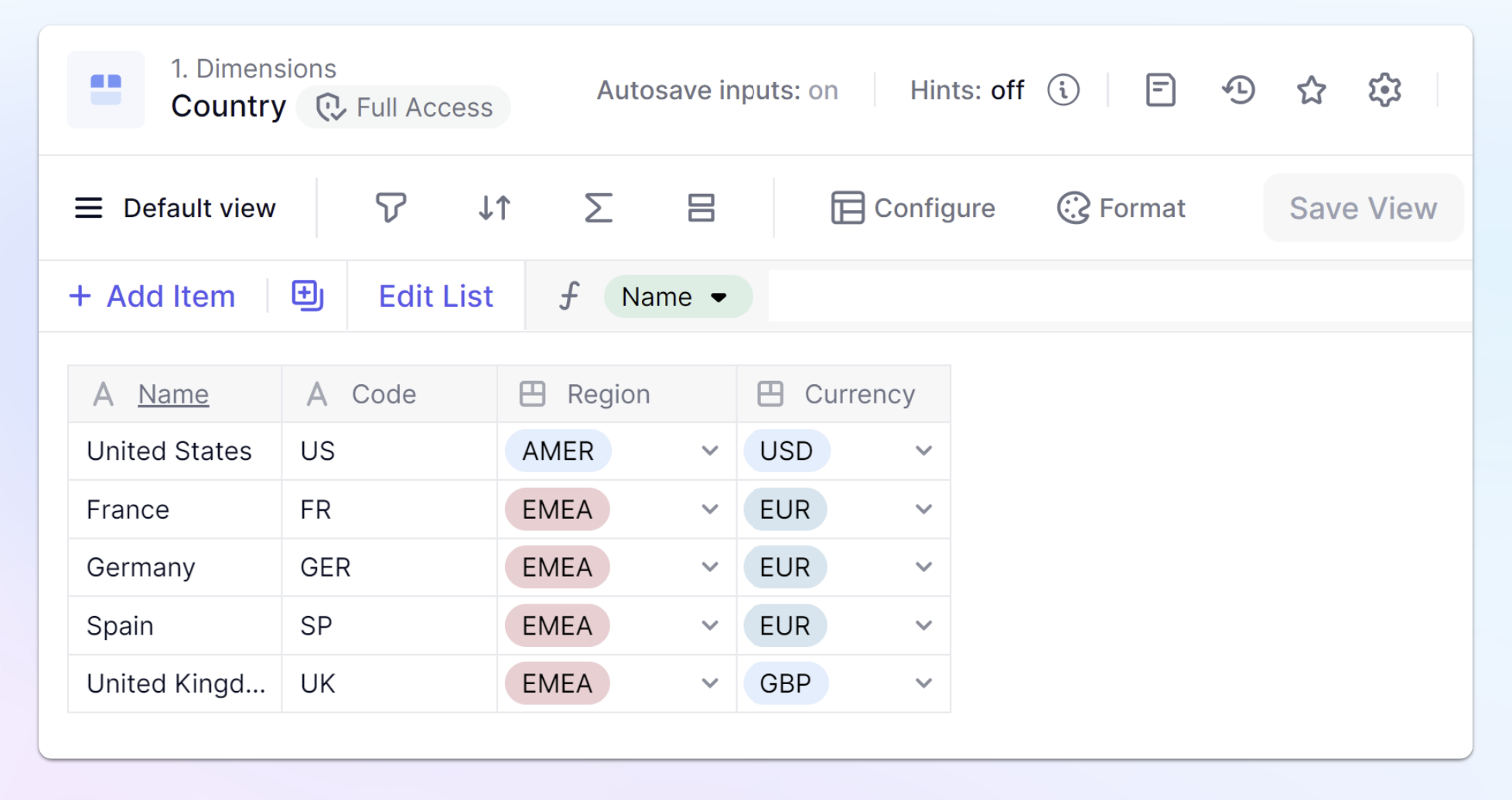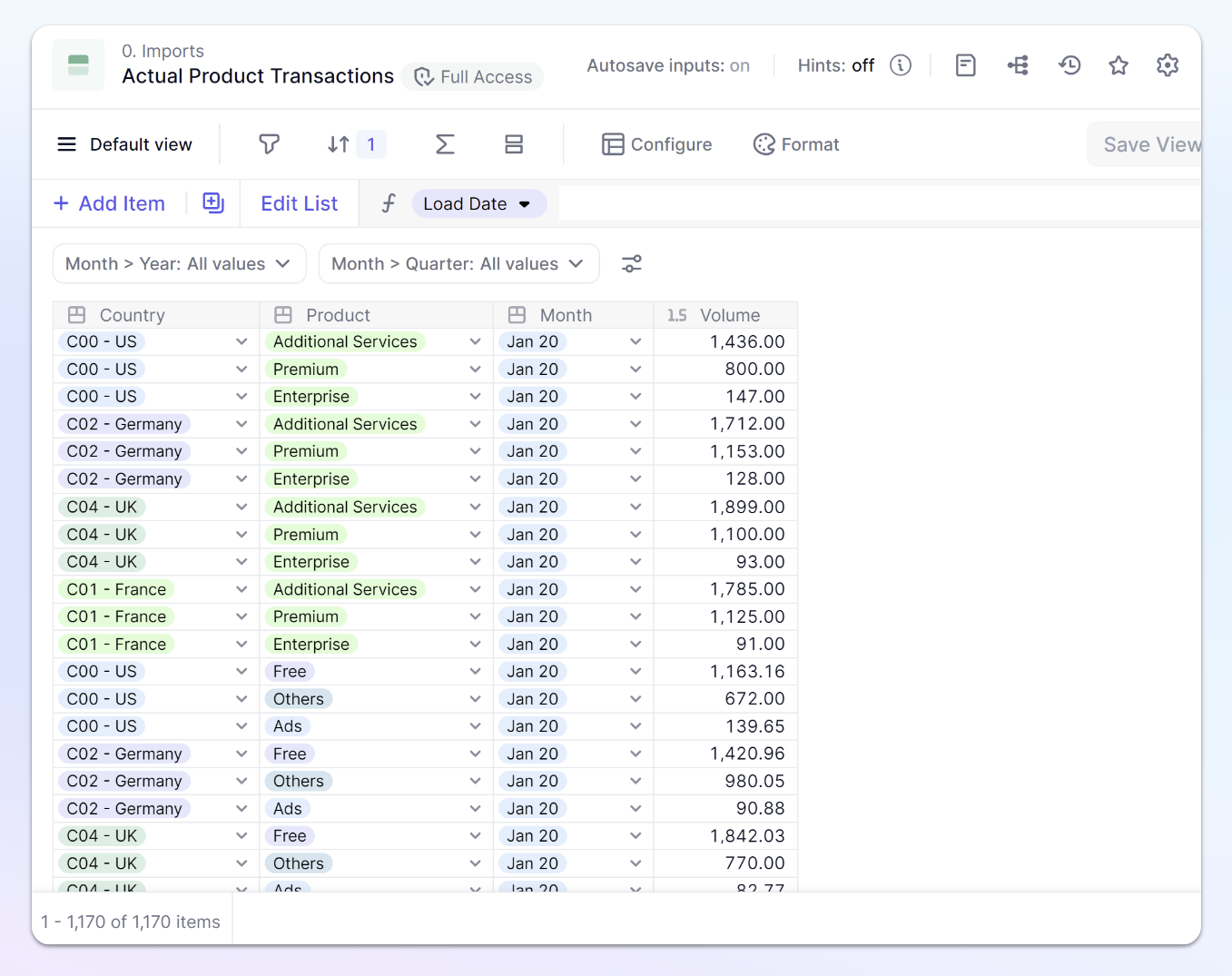There are two different types of lists within Pigment and while they both contain items and have properties, they are used for differently and have different characteristics. In this article, we’ll focus on the two types of Lists.
Table of Contents
Check out this 3-minute video on the difference between Dimension and Transactions Lists in the Academy course Pigment Lists.
What are Dimension Lists?
Dimension lists are used to provide structure for Metrics. They are made up of like items and are reusable across multiple metrics. Some examples might be a list of employees, products, or countries. When working with Dimension lists, each item must be unique. This is because when you are using them in multiple Metrics, Pigment needs to know which item is being referenced.

Examples of Dimension lists
Here are some different examples of the type of lists you might have, organized by different areas. Each of these lists are individual lists, for example with Products, you would have one list containing an item for each Product your company has.
- Calendar list examples - months, quarters, and years.
- Geography list examples - country, state, or region.
- Product list examples - product or product category.
- Customer list examples - customer or customer segment.
- Employee list examples -employee or job role.
- Currency list examples - currencies used in the application.
- Cost center list examples - cost center or expense category.
- Sales channel list examples - sales channel or distribution channel.
- Account list examples - accounts that are sold into
- Asset class list examples - asset class or investment category.
- Versions list examples - Actual, Budget, Forecast.
Transactions List
A transactions list is a list of items that are used to show events or transactions. In most cases, these will be transformed or grouped for analysis. For example, you might have a transaction list showing each booking, which you group together to see by Account, Month, or Product. In this example, you would use a transaction list for the bookings and use dimension lists for Accounts, Products, and Months.
For example a list of orders or accounting booking entries.

| Business Functions | Examples |
|---|---|
| Sales | Sales accepted opportunities, Contracts, Account bookings |
| Finance | General Ledger Data, Trial balance data, Actual sales, Bookings, Accruals, Asset register |
| HR | HRIS outputs, Applicant tracking data |
| Carbon Accounting | Emissions factors |
See also
Understand the different types of blocks
Measure what you need with metrics



